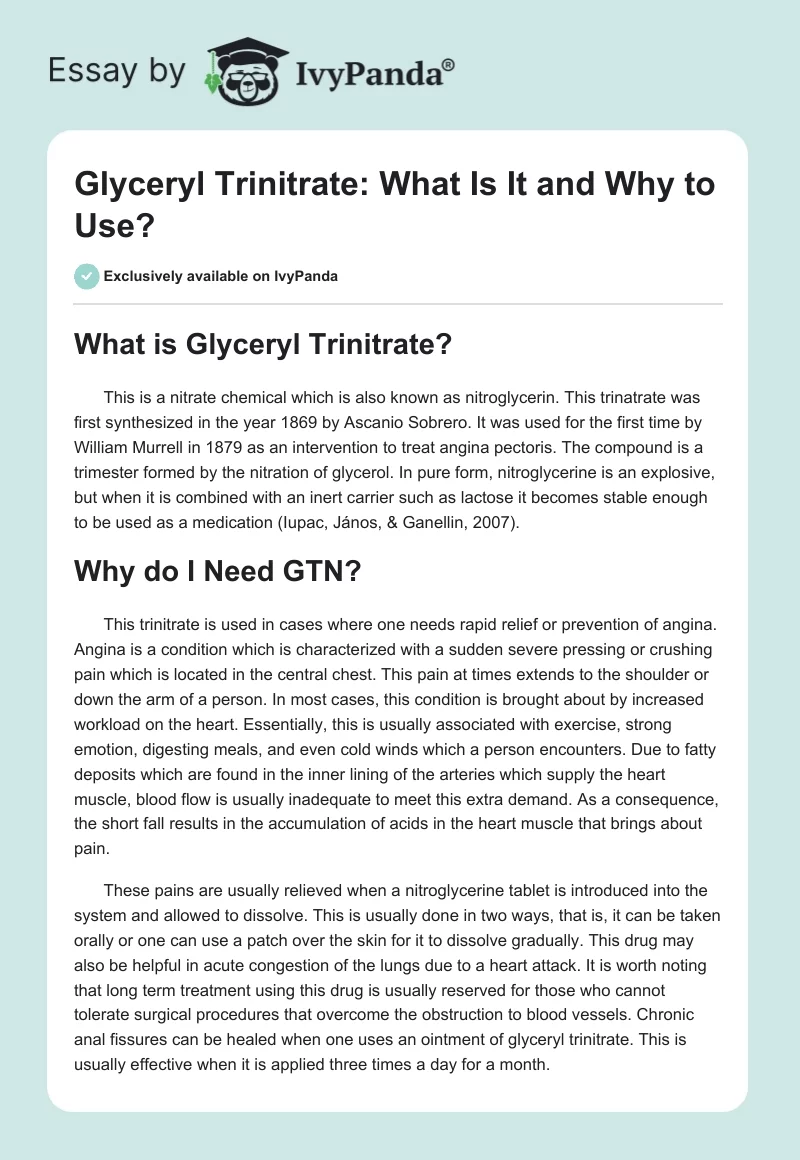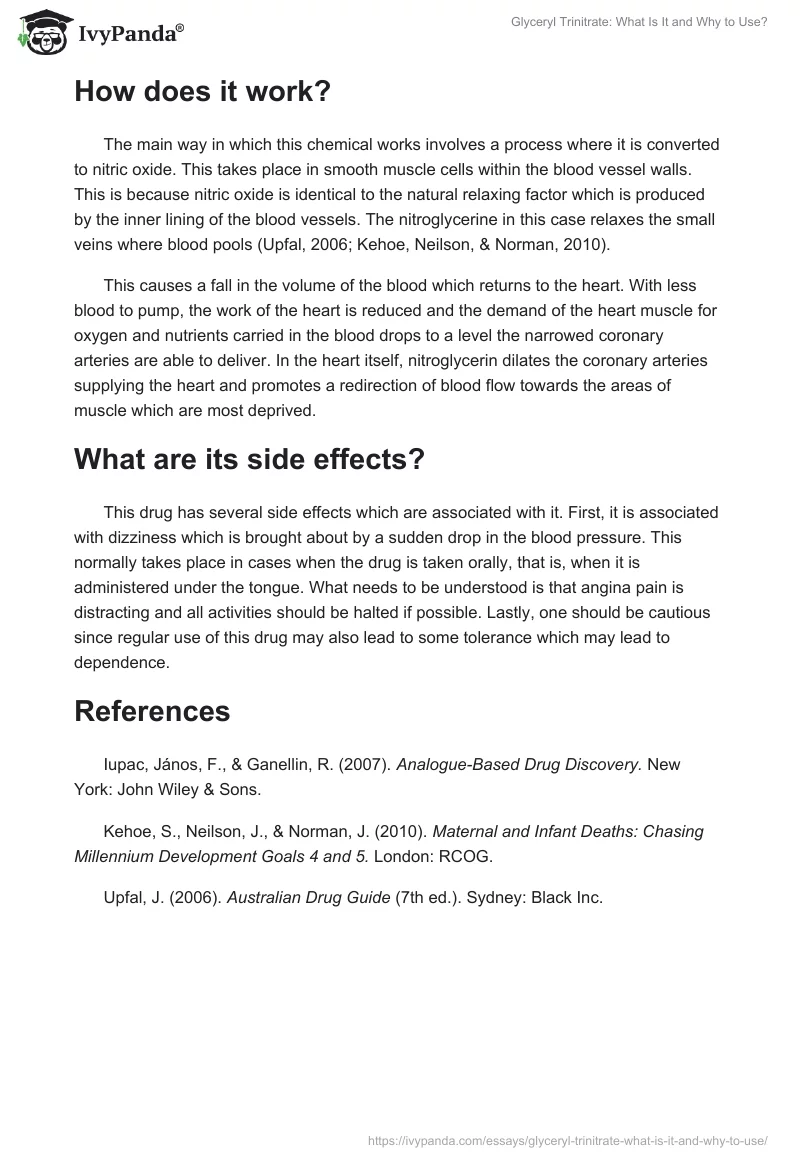What is Glyceryl Trinitrate?
This is a nitrate chemical which is also known as nitroglycerin. This trinatrate was first synthesized in the year 1869 by Ascanio Sobrero. It was used for the first time by William Murrell in 1879 as an intervention to treat angina pectoris. The compound is a trimester formed by the nitration of glycerol. In pure form, nitroglycerine is an explosive, but when it is combined with an inert carrier such as lactose it becomes stable enough to be used as a medication (Iupac, János, & Ganellin, 2007).
Why do I Need GTN?
This trinitrate is used in cases where one needs rapid relief or prevention of angina. Angina is a condition which is characterized with a sudden severe pressing or crushing pain which is located in the central chest. This pain at times extends to the shoulder or down the arm of a person. In most cases, this condition is brought about by increased workload on the heart. Essentially, this is usually associated with exercise, strong emotion, digesting meals, and even cold winds which a person encounters. Due to fatty deposits which are found in the inner lining of the arteries which supply the heart muscle, blood flow is usually inadequate to meet this extra demand. As a consequence, the short fall results in the accumulation of acids in the heart muscle that brings about pain.
These pains are usually relieved when a nitroglycerine tablet is introduced into the system and allowed to dissolve. This is usually done in two ways, that is, it can be taken orally or one can use a patch over the skin for it to dissolve gradually. This drug may also be helpful in acute congestion of the lungs due to a heart attack. It is worth noting that long term treatment using this drug is usually reserved for those who cannot tolerate surgical procedures that overcome the obstruction to blood vessels. Chronic anal fissures can be healed when one uses an ointment of glyceryl trinitrate. This is usually effective when it is applied three times a day for a month.
How does it work?
The main way in which this chemical works involves a process where it is converted to nitric oxide. This takes place in smooth muscle cells within the blood vessel walls. This is because nitric oxide is identical to the natural relaxing factor which is produced by the inner lining of the blood vessels. The nitroglycerine in this case relaxes the small veins where blood pools (Upfal, 2006; Kehoe, Neilson, & Norman, 2010).
This causes a fall in the volume of the blood which returns to the heart. With less blood to pump, the work of the heart is reduced and the demand of the heart muscle for oxygen and nutrients carried in the blood drops to a level the narrowed coronary arteries are able to deliver. In the heart itself, nitroglycerin dilates the coronary arteries supplying the heart and promotes a redirection of blood flow towards the areas of muscle which are most deprived.
What are its side effects?
This drug has several side effects which are associated with it. First, it is associated with dizziness which is brought about by a sudden drop in the blood pressure. This normally takes place in cases when the drug is taken orally, that is, when it is administered under the tongue. What needs to be understood is that angina pain is distracting and all activities should be halted if possible. Lastly, one should be cautious since regular use of this drug may also lead to some tolerance which may lead to dependence.
References
Iupac, János, F., & Ganellin, R. (2007). Analogue-Based Drug Discovery. New York: John Wiley & Sons.
Kehoe, S., Neilson, J., & Norman, J. (2010). Maternal and Infant Deaths: Chasing Millennium Development Goals 4 and 5. London: RCOG.
Upfal, J. (2006). Australian Drug Guide (7th ed.). Sydney: Black Inc.


